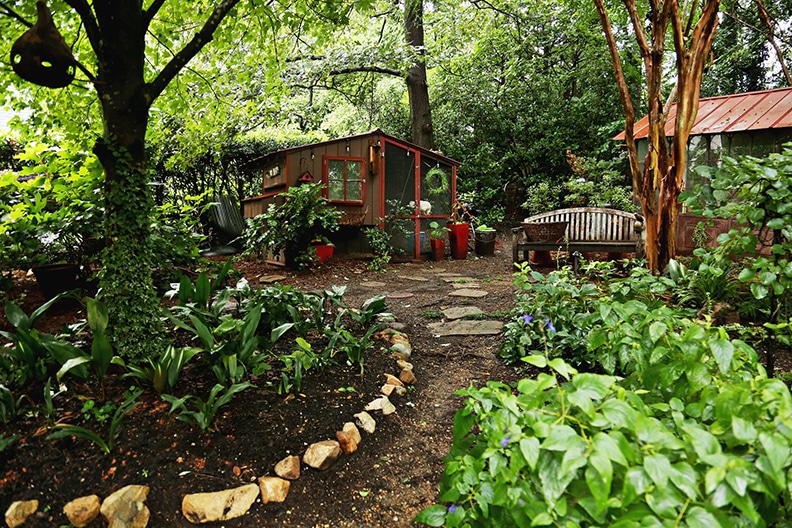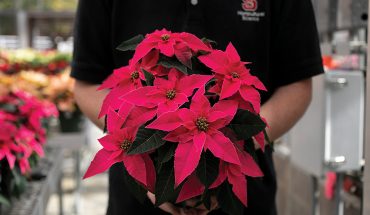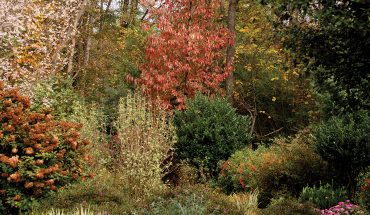It’s time to prepare for fall! Start planting, pulling up the old, and evaluating your space in time for cooler weather ahead.
By Helen Yeost on behalf of Raleigh City Farm

Did a summer of gardening do you in? The heat and humidity were brutal — and paired with flourishing weeds, thirsty flowers, and even thirstier mosquitos, you might be grateful that the big growing season is done. As the flowers and leaves begin to fade, take your time to enjoy the cooler weather to take your time planning, prepping, and pruning for next year.
Evaluate This Past Season
Fall is the perfect time to evaluate your summer garden. Have you noted what went well, what didn’t, and what you hope to improve next year? Of course, you have. We all do it and find it necessary moving forward. Write a list of the winners, and possible remedies for the losers. Does something need to be transplanted elsewhere? Is a plant that was once thriving now not getting enough light? When was the last time you re-nourished the soil? Evaluating and asking yourself these questions will guide your decisions about how to prep and plant for next year.
Get Your Soil Tested
As you’re evaluating, keep an eye out for things that may have gone differently this year. Let’s say your tomatoes had tomato blossom-end rot. Insufficient calcium in the tissue of the tomato is the cause. This often occurs when tomato plants are rapidly growing, and the calcium in your soil isn’t enough — or your soil’s pH may be too low or high. It’s easy to find out: get your soil tested. Particularly if it has been a few years since you had your soil tested, now is an ideal time. Get in touch with the North Carolina Department of Agriculture & Consumer Services for detailed information.
If You Haven’t Yet, Go Native!
Native plants co-evolved with specific host plants to survive. By now, you must be familiar with the relationship of the monarch butterfly, Danaus plexippus, and our native milkweeds, Asclepias spp.? The monarch butterfly would not exist without their only host plant in the milkweed family. Native plants establish relationships with pollinators and other wildlife, making them the best choice for habitat-friendly gardens supporting a healthy web of life. Pollinators are in peril. We can all do our part to help; even it is just a potted native plant on your sunny porch. While watching these visitors flying in your garden is enjoyable, pollinators are essential for producing the fruits and vegetables we need to have the foods we love. Did you know, one out of every three bites of food you eat is the result of pollination? Consider committing to plant more native plants for the benefit of our area pollinators, such as hummingbirds, native bees, and area butterflies. Aside from environmental benefits however, natives are often easy to grow, low maintenance and come back each year!
Prune but not too much
There was a time, long ago, when we ignored the benefits of our pollinators. Back then, we put the garden to bed for the winter. In doing so, we cut down any “unsightly” remnants of summer. We wanted a clean, tidy landscape! But we now understand, these remnants are food and shelter for wildlife. You may be tempted to cut off dead leaves, herbs that are about to bolt, fallen limbs on the ground, etc, but they can be beneficial. Can you consider leaving up just six to seven inches of the stub? And letting some of your summer herbs to go seed? It’s an excellent compromise to help native bee broods.
Leave the Leaves
Leaf litter provides food-web essentials for toads, frogs, and lizards. Sheltered leaf litter includes food and shelter for earthworms, millipedes, pillbugs, and eggs and larvae of insects and spiders. Beneath the debris, water is conserved, and habitats are formed for urban habitat life to raise their young. It’s also a natural, affordable way to fertilize the soil. In our area, the great spangled fritillary butterfly and wooly bear moth caterpillars tuck themselves into a pile of leaves for protection from cold weather and predators. Red-banded hairstreak butterfly lays their eggs on fallen oak leaves, which become the first food of the caterpillars when they emerge. Beyond butterflies, bumblebees also rely on leaf litter for protection. At the end of summer, mated queen bumble bees burrow only an inch or two into the earth to hibernate for winter. An extra thick layer of leaves is welcome protection.
Throughout the fall and winter season, birds scratch through the leaves, looking for and finding food, hopefully. We can help by leaving the leaves. As the leaves break down, they enrich the soil, provide a down-like comforter for small critters, and benefit at least 120 bird species nationwide. Without these essential food sources, the birds are more likely to exit your garden searching for protein elsewhere. Leaf litter fosters living soils with vast numbers of beneficial soil bacteria, fungi, and nematodes working in concert to build healthy loam and nourish plants.
Shop and Plant
Who doesn’t like a sale? I know I do! And while it’s easy to get caught up in spring when the garden centers fill benches with flowering plants, note that if you only go to the garden center in one season, you’ll only have a one-season garden! Look for plants at summer sales; they may look rough, but they can easily be incorporated into your summer garden for next year Look for perennial plants coneflower, indigo, beebalm, goldenrod at a great price and plant them now. Now is also the time to start fall edibles like onion, garlic, broccoli, leafy greens like kale and collards. And start planning for the planting of bulbs, blueberry bushes, and more.
Keep Watering
While summer’s sizzle demands more attention, remember to keep new plants watered, no matter the season. Just because it’s September doesn’t mean we don’t still have some hot and dry days left on the calendar. Give them a good soaking twice a week in the absence of rain, and remember, our winter gardens need watering as well, although the plants are not as stressed. It’s easy to forget, so put a tickler on your calendar as a reminder to water well!.
Prep for Fall Gatherings
While your garden’s blooms may be past their peak, fall is a lovely season for gathering outdoors with friends. Check to make sure your seating is still in good repair, clean off any dirt that may have accumulated over those too-hot-to-handle months, and add some comfort with outdoor pillows or throw blankets that invite guests to stay awhile. Might as well go ahead and stock up on firewood too!



